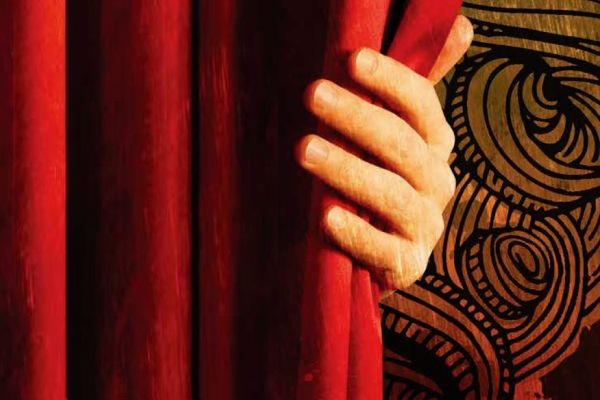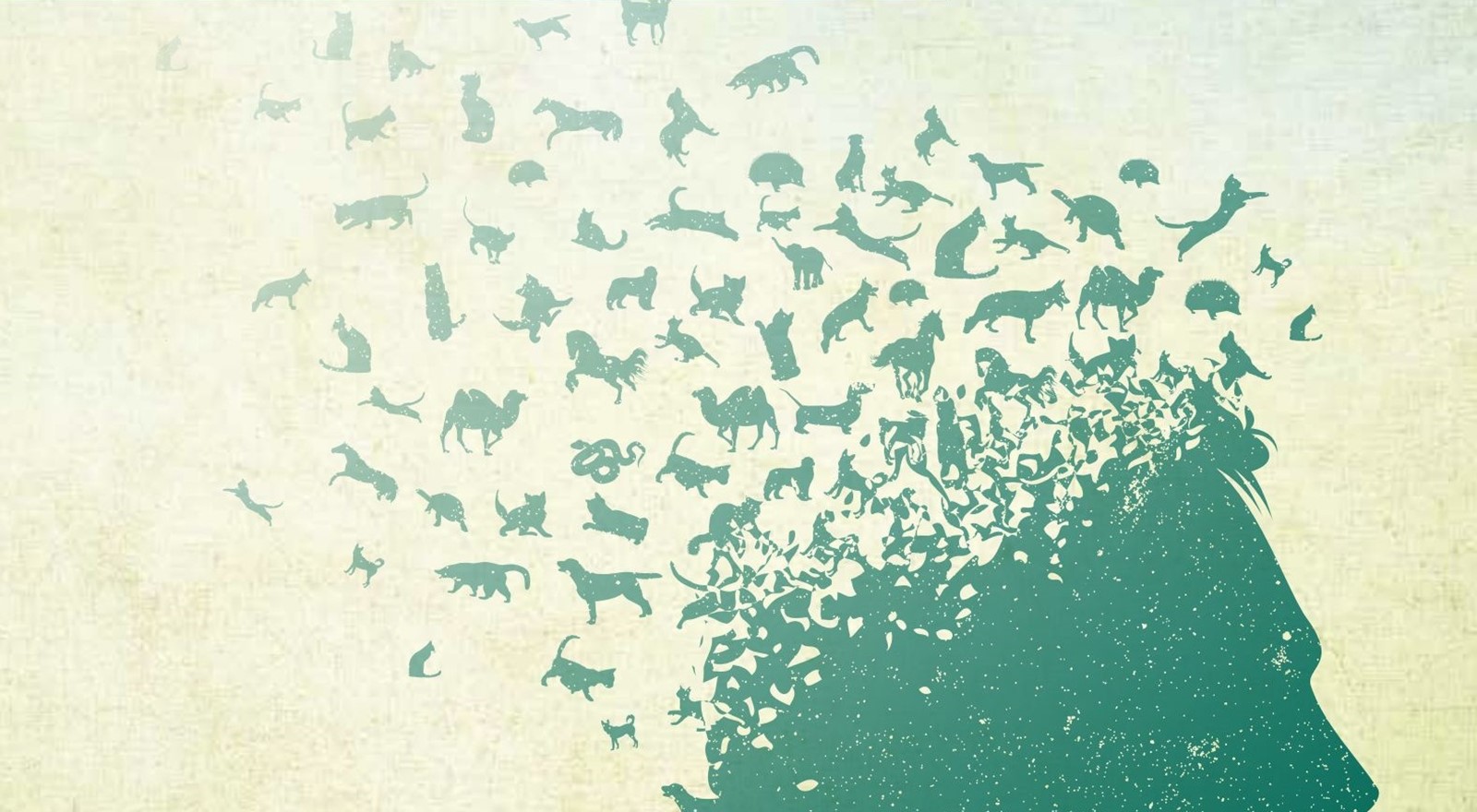As therapists* one of our key capabilities is to be interested in what is going wrong. We pay attention in our consulting spaces to what is not right for our clients: what is not right in their lives so far, in their current situations, in their relationships with others, with us as their therapists, and with the world around them.
That interest seems to be most effective when it is of an open rather than a probing, forensic sort (although there may need to be an archaeological quality to the work sometimes), an interest that has humility – one that is genuinely wanting to hear and learn about someone, without having an agenda, an end point in mind the whole time. We are always asking and being interested in, as Yalom puts it, what ails.1
‘Come into animal presence.
No man is so guileless as
the serpent. The lonely white
rabbit on the roof is a star
twitching its ears at the rain.
The llama intricately
folding its hind legs to be seated
not disdains but mildly
disregards human approval.
What joy when the insouciant
armadillo glances at us and doesn't
quicken his trotting
across the track into the palm brush.
What is this joy? That no animal falters,
but knows what it must do?’
Excerpt from Come into Animal Presence, by Denise Levertov, from POEMS 1960-1967, copyright ©1961 by Denise Levertov. Reprinted by permission of New Directions Publishing Corp.
What a shame that as a tribe we find it hard to bring that same kind of open, generous-spirited interest to bear on our own field whenever we look at what is not going so well in the profession as a whole. A recent report published by UKCP2 and cited in the last issue of this journal,3 included the eye-watering statistic that 94 per cent of the private practitioners surveyed regularly see clients who feel let down by the therapy offered in an NHS setting. The three main reasons given were: the waiting times are long; the therapy offered is too short for their needs; and the intriguingly vague ‘clients are unable to get the type of help they need’. This last reason is likely to be seized on by those who take an anti-CBT/IAPT stance; while those who champion that approach will no doubt have plenty of counter arguments that would offer other explanations for what could be meant by ‘the type of help they need’.
But if we can bring an open, non point-scoring type of interest to what has gone wrong for those people who felt so let down by the therapy that was on offer in an NHS setting, if we can be interested in how they felt failed, and free ourselves up to wonder what might have been going on for them, then we might come up with some things that could fruitfully expand the discussion about what might have been lacking, beyond the well rehearsed wrangling about CBT versus all other approaches.
Might there be something missing in NHS settings (as well as other statutory settings for therapy) that has nothing to do with modalities or numbers of sessions, but instead with the lack of something much more basic and yet also more intangible? Might it be to do with some clients expressing a lack or a failure in what they were offered that could never be addressed by simply offering another modality or more sessions, but could only be addressed by us, as a profession, thinking together in a more radical way about what might be lacking in a lot of therapy settings? Whatever we identify as lacking in some therapy settings might well incidentally help us identify what is radically lacking in the wider setting of Western industrialised societies.
Rundown building
I can imagine the experience of accessing therapy support in an NHS setting because I have done so. I was ‘a service user’ when I was referred to my local CAMHS when one of my children was struggling with anxiety in primary school. The staff were kind, skilled and helpful. The sessions were warm and supportive. I was grateful for their input. But the things that stayed most strongly in my memory from the sessions we were offered as a family have nothing to do with what was said or done by the two pleasant therapists. My memories are of the dreary, characterless and rundown building we entered whenever we attended the sessions. The waiting area with the faint smell of nylon carpeting and cigarettes from the bin by the entrance that was overflowing with fag butts. I remember the faces of the other distressed, anxious parents, the posters reminding us that the NHS would not tolerate assaults on their staff, the dusty artificial plants in plastic pots, and the giant vending machine in the corner, full of crisps and fizzy drinks. It was not a place in which I felt a boost to my general sense of wellbeing, despite the expertise and goodwill of the staff. To be sure, I was already feeling anxious, vulnerable and unhappy about my son’s unhappiness before I headed off to each appointment, but I could feel my spirits droop lower as I sat on the moulded seating and studied my surroundings.
I know many therapists who have felt disenchanted with the spread of CBT within the NHS, but I think they also feel disenchanted with and unsupported by other aspects of their work environments. I have spoken during the last year with a number of colleagues who work in a variety of settings, including hospitals, health centres, schools and colleges, and one of the most basic difficulties they face is the kind of physical space they have to see their clients in. They describe having a room that is little more than a glorified broom cupboard as their consulting space; they explain how they have to work each week in a different room (which they must book ahead and which are frequently taken over by colleagues from other departments for meetings). One colleague lamented that the brand new counselling room she was allocated in a college had glass panels in the door, so sessions could be visible to passers by. In the last example, having received no response to her repeated requests for a curtain or blind, the therapist concerned ended up buying her own material and making a little bespoke curtain; she described it as the one aesthetically pleasant thing to look at in that room.
What we are experiencing through our animal senses is so fundamental to any kind of healing that as a profession we are surely shooting ourselves in the foot if we cannot access the powerful agents of healing that come to us via the bodily senses, to support our more sophisticated attempts at healing. Could the type of therapy that clients complain is not ‘the type of help they need’ be the sort where you are never likely to sit quietly and, as you wait for something to be said, be able to hear the wind in the trees? Could it be the wrong type of help if the therapy takes place in a soulless room with no objects of beauty, creativity or feeling attached to them? And could it be the sort where you are never likely to come into the presence of some of the most instinctively healing presences that humans in modern society can access: non-human animals?
Welcome intrusion
In a study published in 2012, psychologist Andrea Beetz of Rostock in Germany gave 47 seven to 11-year-old boys, who had difficulties forming social attachments, the task of presenting a story to a committee of adults. One group of boys had a toy dog by their side, another had a real dog sitting by them and one group had a friendly human with them. Beetz found that the children who had the lowest cortisol levels (an effective measure of stress) were the ones accompanied by the real dog. Also that the boys who petted and stroked the real dog the most had the lowest levels of cortisol.4
Not long ago I was sitting with a private practice client on a hot afternoon. I had left the door that leads to the back garden of my home ajar for a little air. A mixed race male client in his late 20s** and I sat together in silence. He had been speaking about being bullied, dominated and hurt by important figures in his life, and then had come to a stop. His face looked stiff and he sat, as he usually did, very straight with legs crossed and hands tightly clasped in his lap. He seemed sunk into a state of deep sorrow and anxiety. I was experiencing him as frightened and frozen in his core. I was focused on attuning to how he might be feeling and letting some words form so that I could communicate something to him about what I imagined he was in touch with in this moment. I was watching his face as I pondered how I might frame such a statement when I saw his expression suddenly and dramatically change. His eyebrows arched upwards in delighted surprise and a broad smile, which he attempted to suppress even as it emerged, spread over his lips. I found my own expression changing and mirroring his as I looked down in the direction he was looking. We both watched as a small black paw reached in around the bottom of the door and groped around as if feeling for something. It eventually got a firm purchase on the side and dragged the door open a few inches more and the small black face of one of my family’s cats pushed in through the gap and stared up at us. ‘Oh! A little cat!’ my client exclaimed.
I made a slightly disapproving sound in my throat, indicating I was not entirely happy about this intrusion, whereupon the young cat slid quickly into the room, followed immediately by her identical sister. ‘Two!’ my client burst out. ‘Oh they are so sweet!’ And then, in a very uncharacteristically assertive way – ‘Oh, let them come in. Just let them stay!’ I made some reference to them being a potential disturbance and distraction but my client was focusing on the cats much more than anything I was saying. He had a large bag at his feet and as they approached it for a wary but interested sniff, he encouraged them – ‘Yes, go on. Have a good smell. Explore as much as you like! Have a good look at everything!’ I noticed how moved I felt by his urge to be generous and permissive to the little creatures before him.
The cats explored his bag and I watched him watching them. Then, quite quickly, they settled down, curled up together on top of his bag and made ready to sleep. My client smiled down at them and then at me. His face and general manner had changed considerably since the cats had come in. Although, once the cats had fallen asleep, our exchanges turned once more to painful areas, he had more vigour and spontaneity as he spoke. His face softened and became more animated. He no longer kept his hands so tightly clasped but moved them every now and then to emphasise what he was saying. Clinically speaking, his vagal tone had improved. He seemed calmer, more centred, no longer frozen.
Normally when our sessions ended there would be a slightly stiff, awkward moment when this client would remain sitting after an acknowledgement that we had reached time, looking at me, as if waiting for permission to rise. He would wait until he could see I was about to get up from my seat and then he would get up quickly. I had gently tried a number of times to explore what might be going on for him at the end of sessions, to be met with his polite assurances of there being ‘nothing going on, nothing really’.
On this day, once we were at time, my client leaned down and gently tickled the cats behind the ear before lifting each of them in turn off his bag. ‘Bye, you two. Cheeky things!’ He got up without waiting for me to do so. When I walked him to the front door as usual and showed him out, instead of walking quickly down the path and out of sight round the corner in his normal way, he turned back at the gate and made a small goodbye gesture that was not quite a wave and not quite a salute, and said shyly, ‘Nice to meet your cats.’
Non-human life forms
Humans, it seems, have an innate urge to connect to non-human life forms. Research at the Allen Institute for Brain Science in Seattle has found neurons in the amygdala that respond preferentially to animal images.5
After this session (the ‘Cat Session’, as I named it in my notes), I reflected on what might have played a part in my client’s increased energy and assertiveness, in his coming more to life. There were so many possible ways to make meaning out of what had happened. He had been talking about being painfully bullied, and then two young creatures who weren’t supposed to be in the room pushed their way in, naughtily, and yet were not punished or excluded. Perhaps the cats had symbolised something hopeful – incorrigible little beings who felt no shame, no inhibition. The id had triumphed in that one small episode over the superego, perhaps giving him a tiny flavour of the possibility of that happening in future times and places for him too.
I wondered if the cats might have helped him not only change his sense of how his superego could relinquish some of its iron grip, but also his experience of me in an important way. The cats had ensured that I had ‘failed’ to hold the space and boundary in the session in the usual way and keep out elements from my personal life. My client had been tending to view me through a lens that made me the powerful, respected authority figure in the room. My cats had put a nice big paw-shaped smear on that lens, perhaps making it usefully harder for him to see me only as loftily professional. I could imagine my client finding it slightly excitingly disorientating to see me stagger off my pedestal a bit, as my oversight meant that two little cats could intrude where they were not supposed to be. Also I imagine he may have been able to experience me as someone whose boundaries were susceptible to a bit of negotiation – his ‘Oh, let them stay’ was the first time he had ever said or done anything that was a conscious challenge to any position I was taking. I had not remained rigidly insistent that the cats should leave. That may have encouraged him to feel he could have the right to push a bit for what he wanted and that I would listen to that.
Reflecting on the way the cats might have contributed to a slight dissolving of my client’s rather paralysing transference onto me, I remembered an important moment in my own therapy many years ago. In order to write this article, I have checked this with him, and my therapist of many years ago does not mind me saying that I struggled for some time with a painful negative transference onto him. In my inner drama I could not help casting him as the powerful dominating one. I resented him and was in awe of him in equal measure.
I saw him in his own home and he had an elderly dog who would sometimes be lying in the hall when I arrived. As her sight and hearing were beginning to fail, she would understandably struggle with the sensation of people she did not know suddenly looming close to her, apparently out of nowhere; she would sometimes reveal her displeasure with a grumpy, low growl as I walked past her to climb the stairs. One time, when I pressed the buzzer for my appointment, my therapist suggested I wait at the front door until he could come down and make sure his dog was out of the way. As I stood in the hallway, I could see her at the foot of the stairs and was glad her owner would be coming down to persuade her to lie elsewhere, as I didn’t relish having to step over her, in case she got spooked and snapped at me. I heard my therapist’s footsteps coming down the stairs with a mixture of relief and exasperation at needing his help.
It was then that I heard a sound that confused me for a second. It was a soft, cooing, caressing voice, like a woman’s and yet somehow not a woman’s. ‘Hello, little pupkins. Who’s a good puppy then! Who’s daddy’s princess?’ Who on earth was speaking? It seemed to be coming from up the stairs, but that was where my therapist was and he never spoke like that. The old dog had got stiffly to her feet and was wagging her tail mightily. Her owner came down to the bottom of the steps and my brain had to make some rapid recalibrations. This cooing, affectionate, encouraging, indulgent voice was coming out of the mouth of the man whom I had positioned in my landscape as stern, undemonstrative, unapproachable. What was going on? He came down the stairs into the hall and his dog laid her old ears back against her head giving her a meek, pleased look. ‘Come along, little puppy. What a good pupkins!’ he called, and she walked eagerly on her slightly wobbly legs after him towards the kitchen, with what I could call, at the risk of being fancifully anthropomorphic, an adoring gaze.
In retrospect that was a key moment in my process of a long, slow, disorientating withdrawal of the painful negative projection onto my therapist that I had been struggling with. I would never be able to see him in a light that cast him as stern and all-powerful again, after witnessing this exchange between him and his beloved old dog.
Biophilia
The biologist EO Wilson has used the word ‘biophilia’ to refer to the inherent human trait of focusing on life and life-like processes.6 The Greek root of the suffix ‘philia’ denotes a love of something. Humans, in short, are programmed to love all life forms. To be in contact with and have the chance to be in relationship with all life forms, connects us to our capacity to feel love.
There are of course many ways of working through projections and many ways of working therapeutically. And there are many things about therapy that a client can identify as having failed or having been unhelpful. My recent ponderings on how effortlessly and successfully my cats helped my client out of his frozen state, and on how effortlessly and effectively an old dog made a challenge to my projection onto his owner, lead me to wonder how we, as therapists, can realistically hope to aid healing in settings where there are no opportunities to ever include in the therapy process those other animals we share our planet with, with whom we are profoundly connected and who can help so much with healing if we give them the chance.
*I use the word ‘therapist’ to denote a counsellor and/or psychotherapist.
**The experience with a client I describe is a partly fictionalised account that combines different elements of some real experiences with clients, each of whom has given their permission for me to include their experiences in this way. I thank them for that.
Sarah Van Gogh is a counsellor in private practice in south east London and for SurvivorsUK, a charity that supports men who have experienced sexual violation. She is also a tutor on the counselling diploma at Re-Vision Centre for Counselling and Psychotherapy in north west London
More from Private Practice

Has the pendulum swung too far?
Open article: Can the therapeutic relationship survive the clamour for evidence-based practice? asks Neville Tomlinson. Private Practice, Summer 2015

My creative practice
Open article: As a therapist in private practice who is also actively involved in amateur theatre, Sandra Zecevic-Gonzalez considers the reasons why being creative makes her a better therapist. Private Practice, Spring 2015

Being with what is
Open article: Because mindfulness offers a way to develop a special relationship to suffering, it can be helpful regardless of a client’s presenting problem, argues Kamila Hortynska. Private Practice, Winter 2014
References
1. Yalom ID. Love’s executioner and other tales of psychotherapy. Harmondsworth: Penguin Books; 1989.
2. UKCP and the British Psychoanalytic Council. Public psychotherapy provision. [Online.] www.psychotherapy.org.uk/UKCP_Documents/Reports/PublicPsychotherapy Provision-FINAL-WEBsmall.pdf (accessed 6 July 2015).
3. Daniel J. Editorial. Private Practice 2015; Summer: 2.
4. Beetz A, Julius H, Turner D, Kotrschal K. Effects of social support by a dog on stress modulation in male children with insecure attachment. Frontiers in Psychology 2012; 3: 352.
5. Yuhas D. Pets – why do we have them? Scientific American Mind 2015; 26(3): 28–33.
6. Wilson EO. Naturalist. Penguin Books; 1994.
